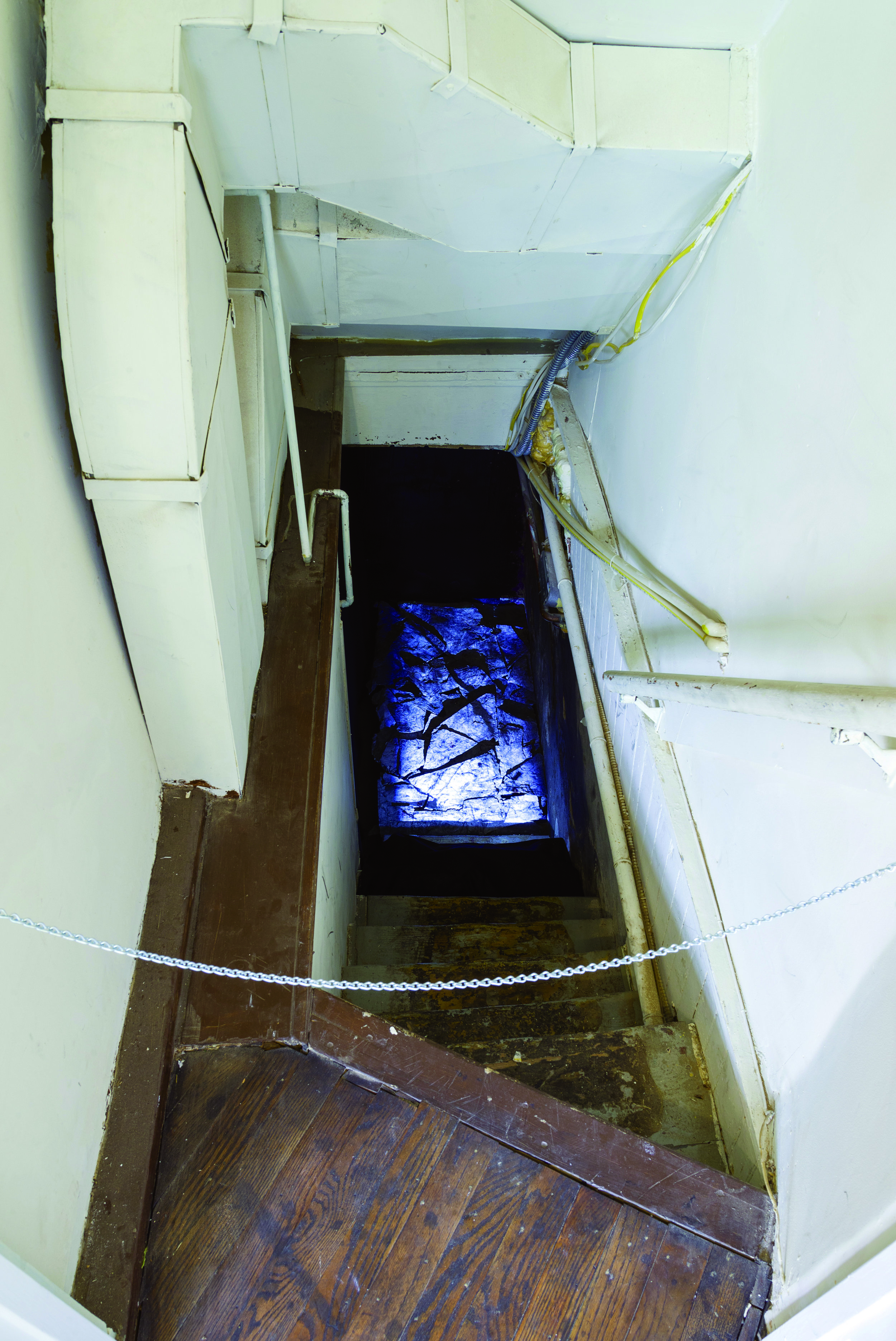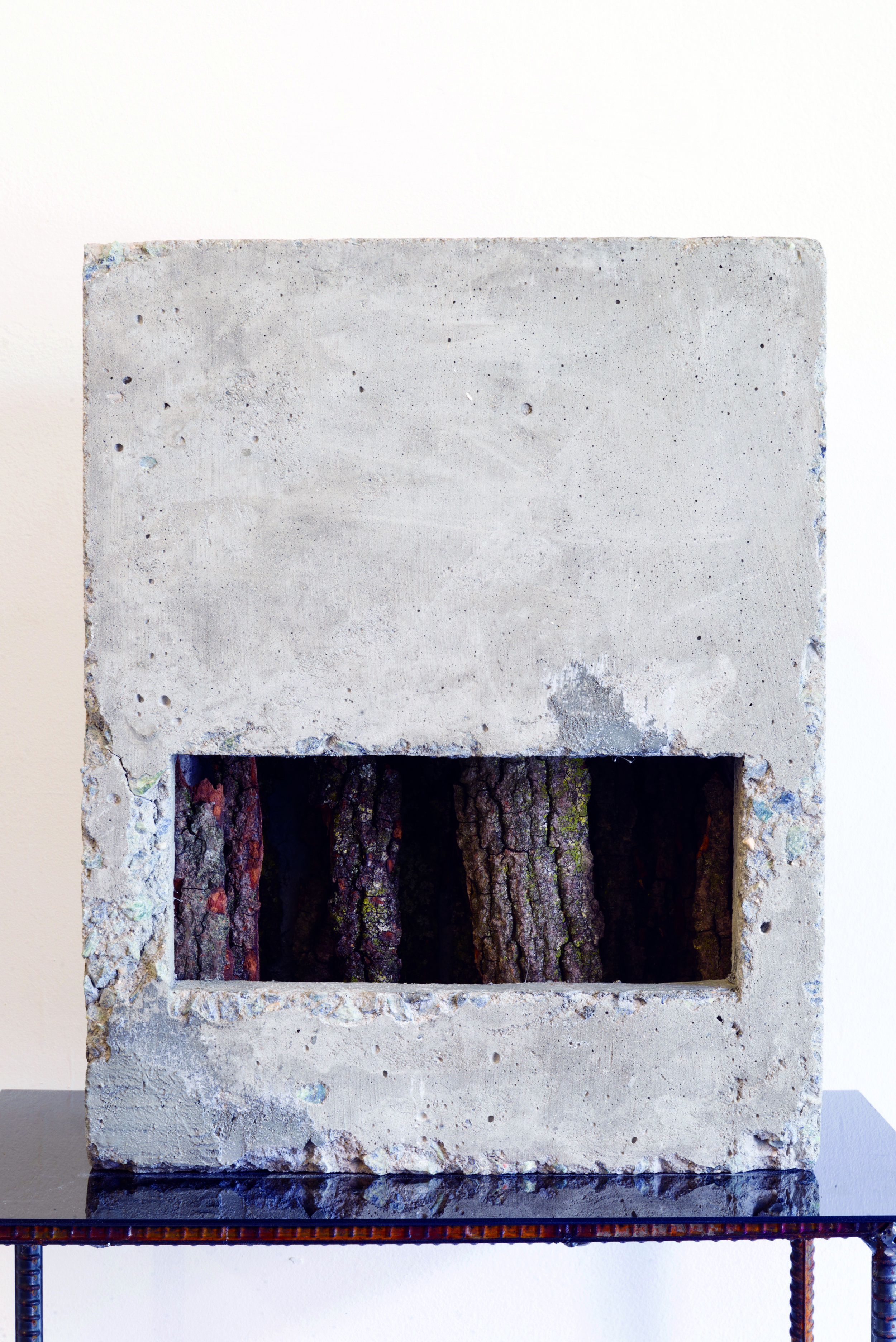The history of civilization is not concrete.
Those with power retroactively construct it as they erect structures in their own names. The perfecting of concrete as a building material by the Romans allowed physical manifestations of imperial power to proliferate rapidly across the Mediterranean Empire. This legacy of heroic architecture, phallic warrior monuments, and patriarchal power flows from the ancients and into the governments that followed and drew influence from them, down into our contemporary existence. Echoes can be heard in conversations around Confederate war monuments built in the name of their “Lost Cause”— a retroactive attempt to both mythologize and concretize a false narrative of history and to silence dissenting voices.
In Counterweight, Sera Boeno, Cevahir Özdoǧan, and Noa Heyne explore the historical power invested in concrete and draw connections to the architectural and sociological conditions of their birthplaces, Turkey and Israel. Understanding the material as inherently gendered, the artists construct works that question the relationship between history, monumentality, power, and the feminine experience. If concrete has often functioned as a vehicle through which power itself is cemented, how can its power be appropriated by the feminine?
—Curated by Emilia Duno, Joshua Gamma, & Hayden Right. Summer 2018
Sera Boeno, Kelimeler Kıyafetsiz (: Words Naked/Are Not Enough), 2016–ongoing. Cement, charcoal, pigment. Each slab ~70 x 35 cm. Photos by Michael Bussell (unless otherwise noted).
Noa Heyne, Entropia, 2017. Video installation with concrete slabs. 16:9 format, 5:13 min.
Noa Heyne’s work in Counterweight, Entropia, is an homage to this latent tensile quality of concrete structure. The piece is nested in the dank basement below The Menial Collection and can only be viewed from the top of the steep, narrow stairs. The initially sound concrete surface below — numbered and systematized for an unclear purpose — undulates in a clumsy dance with an animated organic Entity whose rationale is also never revealed. The Being is whale-like smooth — an awkward Leviathan from just under the surface, reminding us of the presence of the colossal agents which threaten the physical stability of society.
Noa Heyne, Reenter the Night, 2015. Concrete, tree bark, rebar, and Plexiglass (1 of 3). Dimensions variable.
Sera Boeno’s objects exist in a similarly razor-edged reality. Her work Proposal For A Monument for Neriman (Penelope) looks at James E. Young’s theory of the countermonument, and explores manners in which the personal, ephemeral and affective can work to construct a non-violent monument. Proposal erects a compact grid of needles that are directly inserted into the bricks above the hearth and threaded with thin black, hairlike string, in honor of her grandmother, Neriman —but as she insists, this is not the monument. Like much of Boeno’s work, it functions as an experiment — a small part of a larger question complicating the monument, its power and place.
Reenter the Night shares this motif of violent potentiality — the distinction marked by an eerily staged bucolic scene. The diorama — housed within the confines of a rigid concrete box modeled after the guard towers peppered along the Gaza strip — militarizes the serenity of empty space and frames it in a theatrical rendering of the paranoias of war.
Sera Boeno, Proposal For A Monument for Neriman (Penelope), 2017. Sewing needles, thread. 5 x 63.5 x 38 cm. Photo by Joshua Gamma.
Cevahir Özdoǧan’s material experiments include combining fabric and concrete into what she calls “soft concrete”— architectural structure via feminist fiber art — and traditional Turkish embroidery onto tent-like shelters made from transparent silicone rubber and vinyl. Informed by theorist Donna Haraway, Özdoǧan sees these combinations as a fusion of craft and cyborg aesthetics — a new philosophical hybrid of the human, nature, and technology. Özdoǧan deploys the future-past of architecture as a coded, anti-imperialist apocalypse — reifying a feminist epic architecture of ancient history and projecting clues for civilization’s post-destruction survival.
Cevahir Özdoǧan, Soft Concrete, 2018. Concrete, cheesecloth, steel wire cable, cable clip, safety pin. 96 x 60 cm.
Cevahir Özdoǧan, Aseptic, 2018. Embroidery on transparent silicon sheet. 16 x 20cm.
Shown here at day and at night. Night photo by Joshua Gamma.
Cevahir Özdoǧan, Aseptic (detail).
Read entire Counterweight catalogue here.








